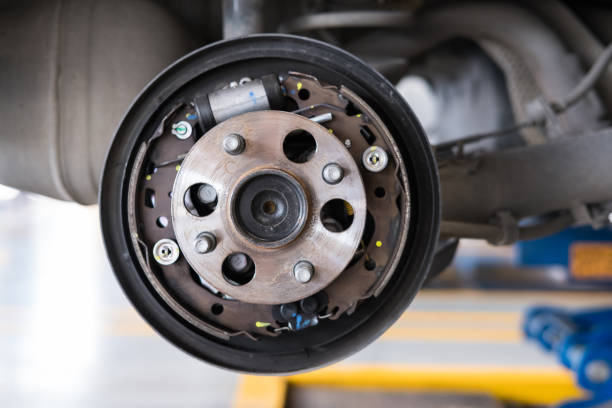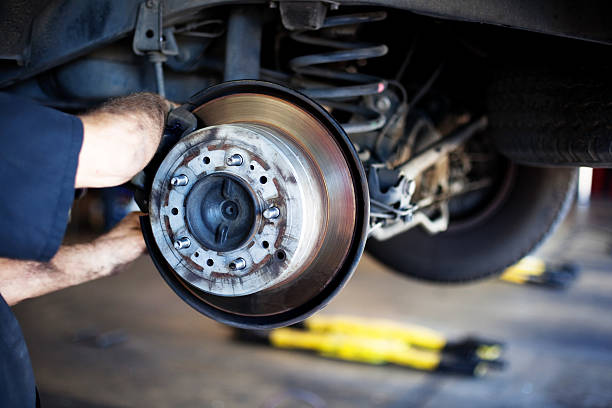
Wheel bearings play a crucial role in the smooth and efficient operation of your vehicle. They are responsible for enabling the wheels to rotate with minimal friction while supporting the weight of the car. Understanding the importance of wheel bearings, how they function, and the signs of wear can help you maintain your vehicle and avoid costly repairs. This comprehensive guide will cover the basics of wheel bearings, their purpose, types, and how to identify and address issues before they become significant problems.
The Function and Importance of Wheel Bearings
Reducing Friction and Ensuring a Smooth Ride
Wheel bearings are designed to minimize the friction between the wheel and the axle, allowing for a smoother and more efficient ride. By reducing friction, wheel bearings contribute to improved fuel efficiency and enhanced driving performance. They are an essential part of your vehicle’s suspension system, helping to ensure a comfortable and quiet ride.
Supporting the Weight of the Vehicle
Another crucial function of wheel bearings is to support the weight of your vehicle. They are engineered to handle both radial (vertical) and axial (horizontal) loads, ensuring that your car remains stable and safe on the road. Properly functioning wheel bearings help distribute the weight of the vehicle evenly, allowing for better handling and control.
Types of Wheel Bearings
Tapered Roller Bearings
Tapered roller bearings are among the most common types of wheel bearings used in vehicles today. They consist of an inner and outer ring, as well as tapered rollers arranged in a conical shape. This design allows for the efficient handling of both radial and axial loads. Tapered roller bearings are commonly found in high-load applications, such as on the wheels of trucks and heavy-duty vehicles.
Ball Bearings
Ball bearings are another common type of wheel bearing used in vehicles. They consist of an inner and outer ring with small steel balls arranged between them. This design enables them to handle both radial and axial loads effectively while providing low friction and a high degree of precision. Ball bearings are often found in smaller, lighter vehicles and are generally considered more efficient than tapered roller bearings.
Roller Bearings
Roller bearings are similar to ball bearings but use cylindrical rollers instead of balls. These bearings can handle heavier loads than ball bearings due to the increased contact area between the rollers and the bearing race. However, roller bearings are typically less efficient than ball bearings in terms of friction reduction. They are used in a variety of applications, including heavy-duty trucks and off-road vehicles.
Signs of Worn or Failing Wheel Bearings

Unusual Noises
One of the most common symptoms of a worn or failing wheel bearing is the presence of unusual noises coming from the wheel area. This can include grinding, growling, or humming sounds that typically worsen when the vehicle is in motion. These noises can be an indication that the wheel bearing is damaged or worn, and that friction and heat are building up within the bearing assembly.
Uneven Tire Wear
Another sign that your wheel bearings may be worn or damaged is uneven tire wear. When wheel bearings fail, they can cause the wheels to become misaligned, leading to irregular tire wear patterns. If you notice that your tires are wearing unevenly, it’s essential to have your wheel bearings inspected by a professional.
Vibration or Wobbling
A failing wheel bearing can also cause vibrations or wobbling in the steering wheel or the vehicle itself. This is usually most noticeable when driving at high speeds or when cornering. If you experience these symptoms, it’s important to have your wheel bearings inspected as soon as possible to avoid further damage to your vehicle or potential accidents.
Steering Issues
If you notice that your vehicle’s steering feels loose, unresponsive, or difficult to control, this may be a sign of worn or failing wheel bearings. The increased friction and misalignment caused by a damaged bearing can negatively impact your vehicle’s handling and overall stability, making it essential to address the issue promptly.
How to Maintain and Replace Wheel Bearings
Regular Inspections and Maintenance
To ensure the longevity and proper functioning of your wheel bearings, it’s crucial to conduct regular inspections and maintenance. This includes checking for any signs of wear or damage, such as unusual noises, uneven tire wear, or vibrations. It’s also essential to keep your wheel bearings properly lubricated to reduce friction and prevent premature wear. Consult your vehicle’s owner’s manual for guidance on the recommended maintenance schedule and procedures for your specific make and model.
When to Replace Your Wheel Bearings
The lifespan of wheel bearings varies depending on factors such as driving conditions, vehicle type, and maintenance practices. Generally, wheel bearings should be replaced every 75,000 to 100,000 miles. However, it’s important to pay attention to the warning signs of worn or failing wheel bearings and have them inspected by a professional if you suspect an issue. Waiting too long to replace damaged wheel bearings can result in further damage to your vehicle and put your safety at risk.
Wheel Bearing Replacement Process
Replacing wheel bearings is a complex process that typically requires specialized tools and expertise. It’s strongly recommended to have this task performed by a qualified professional. The general steps involved in replacing a wheel bearing include:
- Removing the wheel and tire assembly from the vehicle.
- Detaching the brake caliper and rotor.
- Removing the wheel hub assembly.
- Replacing the old wheel bearing with a new one.
- Reassembling the wheel hub, brake components, and wheel.
The exact process may vary depending on the type of wheel bearing and vehicle, so it’s crucial to consult your vehicle’s service manual or consult with a professional mechanic.
Conclusion
Wheel bearings play a vital role in the smooth, efficient, and safe operation of your vehicle. Understanding the different types of wheel bearings, their functions, and the signs of wear can help you maintain your vehicle and avoid costly repairs or potential accidents. Regular inspections, proper lubrication, and timely replacement of worn or damaged wheel bearings are essential for keeping your vehicle rolling with confidence. Always consult with a qualified professional if you suspect an issue with your wheel bearings to ensure your safety and the longevity of your vehicle.








